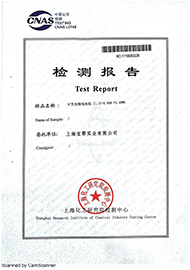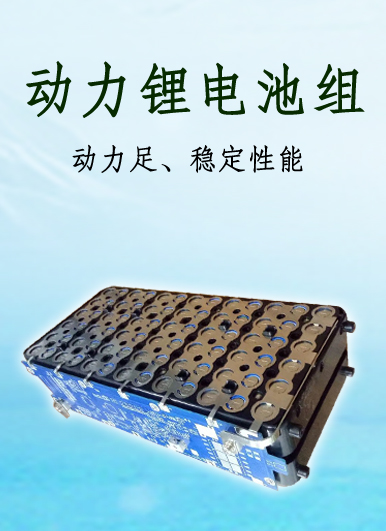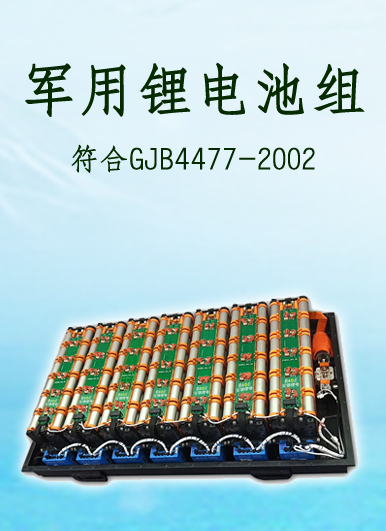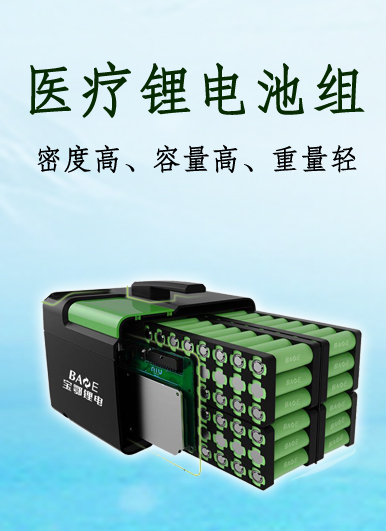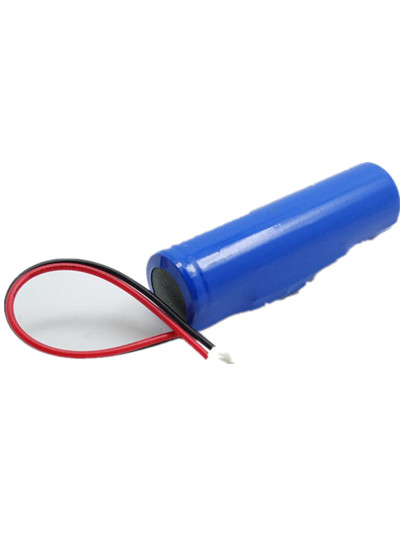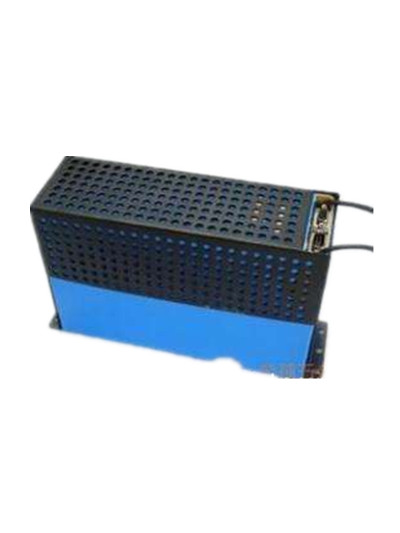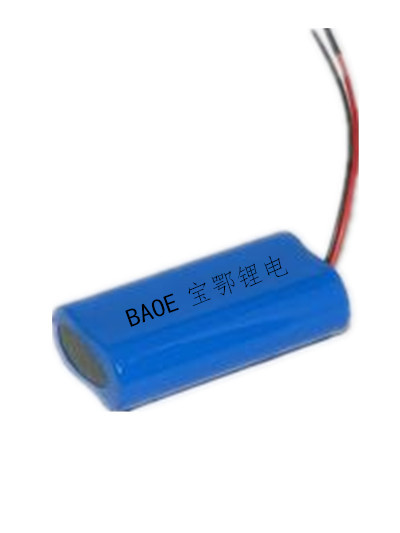Causes of lithium battery explosion: insufficient negative capacity, excessive moisture content, internal short circuit, aging failure of protection lines, overcharge, overdischarge, external short circuit, external extrusion and violent collision.
1. Internal Short Circuit
Because of the short-circuit phenomenon inside, the large current discharge of the core produces a lot of heat, burns the diaphragm, and causes a larger short-circuit phenomenon, so that the core will produce high temperature, decompose the electrolyte into gas, resulting in excessive internal pressure, when the outer shell of the core can not withstand this pressure, the core will explode.
In laser welding, heat is transmitted to the positive ear through the shell, which makes the temperature of the positive ear high. If the upper glue paper does not separate the positive ear and the diaphragm, the hot positive ear will burn or shrink the diaphragm paper, resulting in internal short circuit and explosion.
2. High temperature adhesive wrapped negative ear
When customers spot welding the negative ear, the heat is transmitted to the negative ear. If the high temperature adhesive paper is not affixed properly, the heat on the negative ear will burn the diaphragm, resulting in internal short circuit and explosion.
3. The bottom glue does not completely cover the bottom.
When customers spot-weld at the bottom of the Al-Ni composite strip, a lot of heat will be generated on the bottom shell wall. If the high-temperature adhesive paper does not completely cover the diaphragm, it will burn the diaphragm, cause internal short circuit and explosion.
4. Excessive moisture content
Water can react with the electrolyte in the core to produce gas. When charging, it can react with the lithium produced to produce lithium oxide, which can cause the capacity loss of the core and easily make the core overcharged to produce gas. The decomposition voltage of water is low, and it is easy to decompose into gas when charging. When these gases are generated, the internal pressure of the core will increase, and when the shell of the core is unbearable. At that time, the core will explode.
5. Insufficient negative capacity
When the capacity of the negative part opposite the positive part is insufficient or there is no capacity at all, some or all of the lithium batteries generated during charging can not be inserted into the interlayer structure of the negative graphite, which will precipitate on the surface of the negative electrode and form a protuberant "dendrite". The protuberant part is more likely to cause lithium precipitation during the next charge, and through dozens to hundreds of cycles of charging and discharging. After that, "dendrite" will grow up, and eventually pierce the diaphragm paper, resulting in internal short circuit. When the shell of the core cannot withstand this pressure, the core will explode.
6. Long-term overcharge of core
Core long-term overcharge: long-term charging state, overcharge, overcurrent will also lead to high temperature and high voltage, hidden dangers. Lithium batteries may discharge instantaneously under special conditions such as temperature, humidity and poor contact, resulting in a large amount of current, spontaneous combustion or explosion.
7. External Short Circuit
The external short circuit may be caused by improper operation or misuse. Because of the external short circuit, the discharge current of the battery is very large, which will heat the core. High temperature will shrink or completely damage the inner diaphragm of the core, resulting in internal short circuit and explosion.
8. Thermal runaway
The danger of explosion of lithium batteries is due to a process called "thermal runaway" in the reactions inside the batteries. "Thermal runaway" is a process of positive energy feedback: rising temperature will cause the system to heat up, and the system will heat up, which in turn makes the system hotter. Excessive ambient temperature, often overcharged, will cause lithium-ion batteries thermal runaway, and eventually may cause fire or explosion.
How to prevent the explosion of lithium batteries
(1) Solid-state lithium batteries are developed by using solid-state electrolytes, but the cost is high. In addition, there is the use of new energy supply methods, such as the use of human kinetic energy to provide energy for electronic equipment, which is still in the laboratory stage.
Another direct solution is to add flame retardants to existing electrolytes. However, in order to achieve flame retardancy, it is necessary to add a large number of flame retardants in the electrolyte, which will correspondingly reduce the ionic conductivity of the electrolyte, significantly affecting the electrochemical performance and energy density of lithium batteries.
(3) Researchers have manufactured a new type of "intelligent" electrospinning separator, which has a heat triggering mechanism and contains flame retardants, and can be used to prevent lithium-ion batteries from burning. In this structure, the flame retardant is packaged inside the polymer protective shell to prevent the flame retardant from dissolving directly into the electrolyte, which has a negative impact on the battery performance. When the heat inside the lithium battery is too high, the polymer protective shell will dissolve due to high temperature, releasing flame retardant, thus effectively inhibiting the combustion of highly flammable electrolyte.
Summary: All enterprises must strengthen control, security is the most important performance. When conflicting with other requirements, priority should be given to security. But you can rest assured that with the progress of material technology and the deepening of people's understanding of lithium-ion battery design, manufacturing, testing and use requirements, future lithium-ion batteries will become safer.锂电池爆炸的原因类别:负极容量不足,水份含量过高,内部短路,保护线路老化失效,过充,过放,外部短路,外部挤压和暴力碰撞。
1、内部短路
由于内部产生短路现象,电芯大电流放电,产生大量的热,烧坏隔膜,而造成更大的短路现象,这样电芯就会产生高温,使电解液分解成气体,造成内部压力过大,当电芯的外壳无法承受这个压力时,电芯就会爆炸。
激光焊时,热量经壳体传导到正极耳上,使正极耳温度高,如果上部胶纸没有隔开正极耳及隔膜,热的正极耳就会使隔膜纸烧坏或收缩,造成内部短路,而形成爆炸。
2、高温胶纸包住负极耳
客户在负极耳点焊时,热量传导到负极耳上,如果高温胶纸未贴好,负极耳上的热量就会烧坏隔膜,造成内部短路,形成爆炸。
3、贴底部胶未完全包住底部
客户在底部铝镍复合带处点焊时,会在底部壳壁产生大量的热,传导极芯的底部,如果高温胶纸未完全包住隔膜,会烧坏隔膜,造成内部短路,形成爆炸。
4、水份含量过高
水份可以和电芯中的电解液反应,生产气体,充电时,可以和生成的锂反应,生成氧化锂,使电芯的容量损失,易使电芯过充而生成气体,水份的分解电压较低,充电时很容易分解生成气体,当这一系列生成的气体会使电芯的内部压力增大,当电芯的外壳无法承受时,电芯就会爆炸。
5、负极容量不足
当正极部位对面的负极部位容量不足,或是根本没有容量时,充电时所产生的部分或全部的锂电池就无法插入负极石墨的间层结构中,会析在负极的表面,形成突起状“枝晶”,而下一次充电时,这个突起部分更容易造成锂的析出,经过几十至上百次的循环充放电后,“枝晶”会长大,最后会刺穿隔膜纸,使内部产生短路。当电芯的外壳无法承受这个压力时,电芯就会爆炸。
6、电芯长期过充
电芯长期过充:长时间充电状态下,过充、过电流也会导致高温高压,发生隐患。锂电池在特殊温度、湿度及接触不良等状况下可能瞬间放电而产生大量的电流,发生自燃或爆炸情况。
7、外部短路
外部短路可能由于操作不当,或误使用所造成,由于外部短路,电池放电电流很大,会使电芯的发热,高温会使电芯内部的隔膜收缩或完全坏坏,造成内部短路,因而爆炸。
8、热失控
锂电池之所以会有爆炸的危险,是由于在电池内部的反应中一个叫“热失控”的过程。“热失控”是一个能量正反馈循环过程:升高的温度会导致系统变热,系统变热升高温度,这反过来又让系统变得更热。环境温度过高,经常过充,都会引起锂离子电池出现热失控,最终可能产生起火或者爆炸。
如何防止锂电池爆炸呢
①使用固态电解质,开发固态锂电池,但是其成本较高。此外,还有就是使用新的能量供给方式,例如利用人体动能给电子设备提供能量,目前这个方案还处于实验室阶段。
②另外一个很直接的方案就是在现有的电解液中增加阻燃剂。但是,为了完成阻燃性,就需要在电解液中添加大量的阻燃剂,这样会相应地降低电解液的离子导电性,显著影响锂电池的电化学性能和能量密度。
③研究人员,制造了一种新型“智能”静电纺丝分离器,它具有热量触发机制,内部含有阻燃剂,可用于防止锂离子电池燃烧。在这种结构中,阻燃剂包装在聚合物保护壳的内部,以防阻燃剂直接溶解到电解液中,从而给电池性能造成负面影响。当锂电池内部的热量过高时,聚合物保护壳会因为高温而发生溶解,释放出阻燃剂,从而有效抑制高度易燃的电解液发生燃烧。
总结:所有企业必须加强控制,安全性为各项性能中最重要的。当与其它要求冲突时,优先满足安全性,这是首当其冲的。但是大家放心,随着材料技术的进步和人们对锂电池设计、制造、检测和使用诸方面要求的认识不断加深,未来的锂离子电池会变得更安全。リチウム電池の爆発の原因類別:負極容量が足りなくて、水分量が高すぎて、内部短絡、保護線の老化が失効して、過充電、外部短絡、外部の圧迫と暴力が衝突します。
1、内部短絡
内部に短絡現象が発生して、電気芯の大電流が放電され、大量の熱が発生して、断熱膜を焼き壊して、より大きな短絡現象を引き起こします。そうすると、電気芯は高温になり、電解液を気体に分解し、内部圧力が大きすぎて、電気芯の外殻がこの圧力に耐えられない時、電気芯が爆発します。
レーザー溶接の時、熱はシェルを通じて正極耳に伝わり、正極耳温度を高くします。もし上部のセロテープが正極耳と隔壁を隔てていないなら、熱の正極耳は隔膜紙を焼いたり収縮したりして、内部短絡を引き起こし、爆発を起こします。
2、高温テープでマイナス耳を包む
お客様が負極耳点溶接の時、熱はマイナス耳に伝わります。もし高温のテープが貼られていないなら、負極耳の熱は防膜を焼き、内部短絡を引き起こし、爆発を起こします。
3、底のゴムを貼り付けて、底の部分を完全に包んでいません。
お客様は底のアルミニウムニッケル複合バンドに溶接する時、底の殻壁に大量の熱が発生し、伝導極芯の底部に高温のテープが完全に遮膜を包まないと、隔膜を焼いて、内部短絡を引き起こし、爆発を形成します。
4、水分量が高すぎる
水の成分は電気芯の中の電解液と反応して、ガスを生産し、充電する時、生成したリチウムと反応して、酸化リチウムを生成し、電気芯の容量を損失させ、電気芯を過充電してガスを生成しやすく、水分の分解電圧が低く、充電する時に分解しやすくなります。この一連のガスは電気芯の内部圧力を増大させます。電気芯は爆発する。
5、負極容量が足りない
正極部の反対側の負極部の容量が足りない場合、または全く容量がない場合、充電時に発生した部分または全部のリチウム電池は負極グラファイトの中間層構造に挿入できなくなり、負極の表面に解析され、突起状の「枝晶」を形成し、次の充電時にこの突起部はリチウムの析出をもたらしやすくなり、数十回以上の循環充電を経て放電する。「枝晶」は大きくなり、障子紙を突き破って内部に短絡を生じる。この圧力に耐えられないとコアが爆発する。
6、電気芯の長期過充電
電気芯は長期にわたり過充電します。長時間充電した状態で、過充電、過電流も高温高圧を引き起こし、隠れた危険が発生します。リチウム電池は、特殊温度、湿度及び接触不良などの状況下で、瞬間放電によって大量の電流が発生し、自然発火や爆発が発生する可能性があります。
7、外部短絡
外部短絡は操作が不適切なため、または誤って使用したため、外部短絡により、電池の放電電流が大きく、電気芯の発熱を引き起こし、高温で電気芯内部の隔膜が収縮したり、完全に壊れたりして、内部短絡を引き起こし、爆発します。
8、熱暴走
リチウム電池が爆発する危険性があるのは、電池内部の反応の中で「熱暴走」という過程があるからです。「熱暴走」はエネルギー正フィードバックサイクル過程である。上昇した温度はシステムが熱くなり、システムが熱を上げて温度を上げる。これは逆にシステムをより熱くする。環境温度が高すぎて、充電が頻繁に行われています。リチウムイオン電池の熱暴走を引き起こし、最終的には発火や爆発を起こす可能性があります。
リチウム電池の爆発を防ぐにはどうすればいいですか?
①固体電解質を使って固体リチウム電池を開発したが、そのコストは高い。また、人体運動エネルギーを利用して電子機器にエネルギーを供給する新しいエネルギー供給方式もあり、現在は実験室の段階にあります。
②もう一つの直接的な方法は、既存の電解液に難燃剤を追加することです。しかし、難燃性を達成するためには、電解液に多くの難燃剤を添加する必要があり、これに応じて電解液のイオン伝導率を低下させ、リチウム電池の電気化学性能とエネルギー密度に著しく影響を及ぼす。
③研究者は、リチウムイオン電池の燃焼を防ぐために、熱トリガ機構を有する新型の「スマート」静電紡糸分離器を製造した。この構造では、難燃剤は高分子保護ケースの内部に包装され、難燃剤が電解液に直接溶解し、電池の性能に悪影響を与える。リチウム電池内部の熱量が高すぎると、高分子保護ケースは高温で溶解し、難燃剤を放出し、高燃性の電解液の燃焼を効果的に抑制する。
総括:すべての企業はコントロールを強化しなければならなくて、安全性は各性能の中で最も重要です。他の要求と衝突した場合、安全性を優先的に満たすことが第一です。しかし、材料技術の進歩と、リチウム電池の設計、製造、検査、使用についての諸方面の要求の認識が深まりつつありますので、安心してください。将来のリチウムイオン電池はもっと安全になります。


